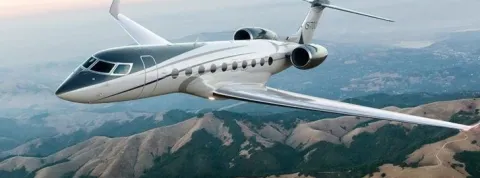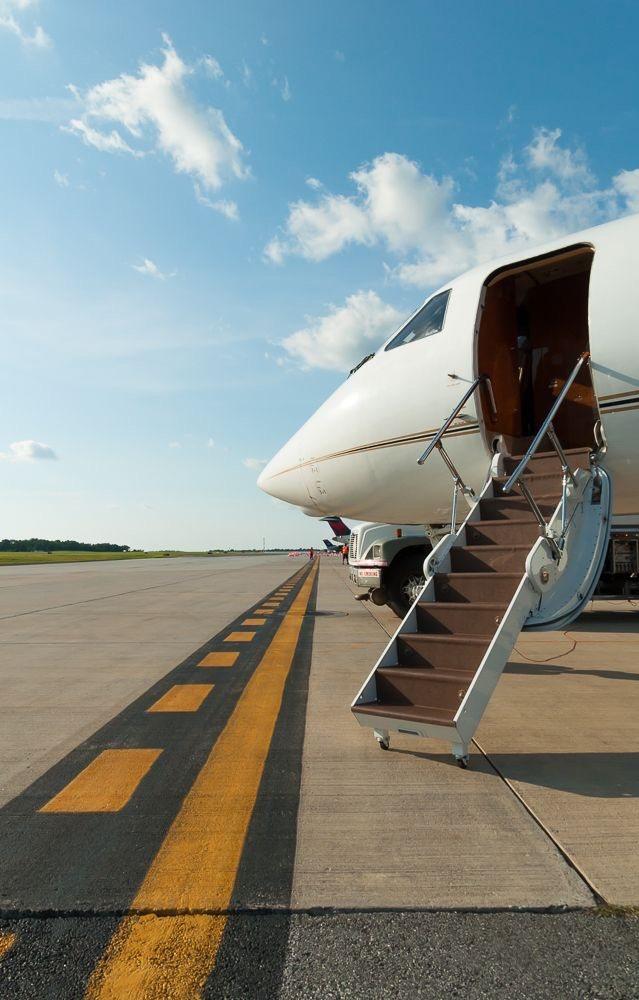
Business aviation: Focus on an industry that is adapting
While the traditional travel industry and commercial aviation have felt the consequences of the crisis, their sister industry, business aviation, has managed to pull through and adapt in a coherent manner. A change in needs that has given rise to new models and is redrawing the contours of a market that was used to discretion and reserved for a few initiates.
So, let's get on board right away and head for a booming industry that is definitely looking to the future.
A booming sector
Like a catalyst for transformation, the health crisis has brought with it a clear increase in demand for business aviation. Fast and reliable, it is recognised as a formidable tool for growth and development at the service of companies.
Indeed, customers today want tailor-made flexibility, and to be able to benefit from the flexibility and peace of mind that this type of transport offers. The issue of health safety is also on the agenda and encourages travellers to choose more intimate modes of transport.
As proof of this expansion and success, 2,000 airports and aerodromes in Europe cater for business jets, 10 times more than airports open only to airliners, offering a valuable variety of destinations.
Another major factor in the success and democratisation of this industry is the arrival of less expensive jets.
It is no longer necessary to travel in a Bombardier or Falcon, or any other luxury jet. Companies are now focusing on turbine (propeller) aircraft rather than jet engines. These aircraft offer equivalent routes to jets, have pressurised cabins, and the cost of a flight hour is much more affordable.
Less expensive to operate, they also allow a more varied range and are therefore perfectly suited to intra-European travel.
On the other hand, business jets offer safety levels that are equivalent if not superior to those of commercial aviation, they flirt with the speed of a jet, they adapt to different terrains, in short, the industry seems to have found an ideal compromise. And it's working: since the beginning of 2021, there has been a 15-20% increase in the private/business aviation sector. France is Europe's leading destination for business jets, with an average of 157 departures per day, for a total of 57,000 air departures over the year.
Another major development is that sustainability is currently at the heart of projects: indeed, business aviation is also banking on more responsible and more thoughtful travel, for example by collaborating with environmental impact assessment systems. An example is the partnership between Private Fly and 4AIR.
4AIR is a centralised platform that allows airlines (and other aviation players) to exchange carbon offsets to reduce their climate impact. This is a significant development for a sector that is often criticized for its carbon footprint.

A la carte air & a sense of sharing: the birth of new strategies
While for many, private aviation is synonymous with gleaming jets, caviar and champagne, the reality is quite different. Here, it is a question of flexibility and profitability: as much for the companies as for the customers. Indeed, business aviation is no longer a luxury reserved for a few. Flexibility and speed, to remain in this niche, companies are developing adapted offers that are ever more in tune with the needs of their customers. We can even talk about a certain "uberisation" of aviation.
As Thibaut de La Rivière, director of Sup de Luxe, explains: "From now on, the use of a business aircraft is simpler and more accessible thanks to the development of on-demand rental companies or those offering the option of jet ownership, but in an aircraft-sharing formula."
The principle is simple: a potential buyer acquires an aircraft by sharing it with other users. The share is usually based on the owner's need. The aircraft is then available according to the share. If, for example, an owner acquires 30% of the aircraft, he or she is entitled to use it for 30% of his or her flying time.
Another model is time-sharing:
Several companies can also join together to acquire an aircraft, which will then be entrusted to an aircraft taxi company. The company will market the unused flight time to reduce the cost of use. Finally, the company can purchase flight hours for its own travel, with subscription packages also available. It is important to note that only 3% of jets are in private hands and that the purchase of an aircraft is becoming increasingly rare, with an average of 400 hours of flight time before it becomes profitable. The American company NetJets is the world leader in this field, followed by Jetfly and the Swiss company Fly7. New players are making their fleet of aircraft available and are increasingly adapting their services.
In addition, in the search for flexibility, the working model is also changing.
This is the case, for example, with the status of pilots. Today, more and more pilots are freelancers, responding to a targeted demand according to their qualifications. This is a new adaptation for the sector.
With more than 17,000 business jets in service worldwide and new travel arrangements, business aviation is keeping its promises and, above all, does not seem to have said its last word...
